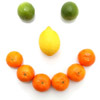- What is a vegetarian?
- Types of vegetarians
- Advantages of a vegetarian diet
- Are vegetarians at a higher risk of nutrient deficiencies?
- Vegetarians in special groups
- Top tips for maintaining a healthy vegetarian diet
What is a vegetarian?
Vegetarians are people who exclude animal meat from their diet.A vegetarian diet comprises mainly of fruits and vegetables.
Types of vegetarians
Vegetarians are mainly categorised into three groups:
- Vegan: excludes eggs, milk and all animal products from the diet.
- Lacto-vegetarian: includes milk and milk products in the diet.
- Ovo-lacto vegetarian: includes eggs and milk and milk products in the diet.
Awareness of vegetarianism has grown in recent years and many individuals now eliminate meats from their diets. Individuals may choose to follow a vegetarian diet for several reasons, including religion, ethical issues, environmental issues, economic status or nutritional advantages.
Many studies have been carried out on the health advantages and disadvantages of vegetarian diets. The Dietitians Association of Australia (DAA) reported that vegetarian diets can be healthy, as plant foods are high in dietary fibre and low in saturated fat. However, the DAA noted that a well-designed vegetarian diet should include a wide range of foods to meet the nutritional requirements.
Advantages of a vegetarian diet
Besides religious, economic and environmental factors, a large number of individuals follow vegetarian diets because studies have shown that diets with an emphasis on plant foods provide important health benefits, such as a reduced risk for several chronic diseases (e.g. diabetes, cardiovascular disease, coronary artery disease, obesity, hypertension, cancers and ischaemic heart disease mortality). Vegetarian diets are low in cholesterol, low in animal-based saturated fats and proteins, and high in folate, fibre, antioxidants, carotenoids and phytochemicals. As a general rule, vegetarians have a lower mean body mass.
Are vegetarians at a higher risk of nutrient deficiencies?
Vegetarian diets that are not well designed may not have the necessary amounts of some nutrients, such as iron, zinc, calcium, protein, vitamin B12 and long chain n-3 fatty acids (e.g. EPA and DHA). Low levels of these nutrients can have a negative impact on health. Vegans usually have lower levels of these nutrients than ovo-lacto and lacto vegetarians.
Protein
Proteins are made up of 20 common amino acids. These 20 amino acids form two groups, namely essential and non-essential amino acids. Essential amino acids cannot be synthesised in the human body. Therefore, these amino acids must be derived from our diet, in contrast to the non-essential amino acids which can be synthesised in humans.
Dietary protein is a source of amino acids for protein synthesis, and for the synthesis of non nitrogen-containing substances. Examples of non nitrogen-containing substances are DNA, RNA, ATP, pituitary hormones, etc. Dietary protein is also used to replace daily nitrogen lost in urine, stool, skin, hair, etc.
Table 1: Protein in foods
| Food | Protein in food (g/100g) |
|---|---|
| Lean beef | 28 |
| Fish | 18 |
| Eggs | 12 |
| Milk | 3.3 |
| Cheese | 26 |
| Peas | 5 |
| Beans | 7 |
| Bread | 7.8 |
| Potatoes | 1.6 |
| Cauliflower | 1.6 |
| Apples | 0.3 |
The majority of foods we eat contribute some amounts of protein to our diet. Animal products have higher protein contents than fruits, vegetables and breads. Vegans, who restrict their diets to fruits and vegetables only, may receive inadequate amounts of dietary protein. It is recommended that vegans include legumes, nuts, and cereal grains in their diets to meet protein needs.
Iron

Iron in foods are categorised into haem iron and non-haem iron. Haem iron is found in meat, whereas non-haem iron can be derived from a wide range of plant and animal foods. The human body can absorb and utilize haem iron better than non-haem iron. Therefore, haem iron has a higher bioavailability than non-haem iron.
The human body’s ability to absorb and use iron is affected by other elements, such as vitamin C, phytates and polyphenols. Vitamin C enhances the absorption and utilisation of non-haem iron by the human body. Phytates and polyphenols inhibit the absorption and utilisation of non-haem iron. Phytates are naturally occuring in lentils, legumes, nuts and whole grains, and polyphenols are found in tea, coffee and red wine.
A well-designed vegetarian diet should ensure adequate iron intake. It is suggested that vegetarians consume iron-rich plant foods as alternative sources of iron. A meal which combines vitamin C-rich foods with iron-rich plant foods can enhance the absorption and utilisation of non-haem iron. It is also recommended that vegetarians limit their tea and coffee drinking between meals.
Iron sources for vegans include dried fruits, whole grains, nuts, seeds, pulses and green leafy vegetables. Some iron-rich foods that are usually eaten in small amounts include parsley, watercress and seaweeds.
Zinc
Zinc (chemical symbol Zn) is a trace mineral that can be found in almost every cell of our bodies. Zinc is essential to the human body because it stimulates enzyme activities, provides a healthy immune system, is used for wound healing, sustains senses of smell and taste, and is used for DNA synthesis. Zinc is important for normal growth and development during pregnancy, childhood and adolescence.
Zinc is found in many types of food. Excellent sources of zinc are oyster, red meat and poultry. Other sources include some seafoods, wholegrains, beans, fortified breakfast cereals and dairy products.
Dietary proteins enhance the absorption and utilisation of zinc. Diets rich in animal protein will absorb more zinc than diets rich in plant proteins. On the other hand, phytates reduce the body’s ability to absorb zinc. Many plant foods that are good sources of zinc also contain phytates, and therefore vegetarians cannot rely on beans and legumes as the only source of zinc. Vegetarians should include zinc-fortified breakfast cereals in their diets to meet their zinc needs.
Calcium
Calcium (chemical symbol Ca) is essential for growing and maintaining strong bones and teeth; healthy nerve and muscle function; blood clotting; and hormone release. Getting enough dietary calcium is essential for maximising the peak bone mass during the first 3 decades of life, and for minimising the following bone loss. If not enough dietary calcium is consumed, bone calcium is used to maintain blood calcium levels.
Food sources that contain calcium include dairy products, soy products, leafy green vegetables, nuts and seeds, bread, tap water in hard water areas, dried fruits, fortified foods and beverages and supplements.
Oxalate and phytate inhibit calcium absorption and utilisation. An exception is soybeans, which are rich in oxalate and phytate, yet correspond with higher calcium absorption and utilisation. Sweet potatoes, kale, broccoli and bok choy also help increase calcium absorption.
Although the human body can absorb and use calcium from most vegetables, fruits and cereal grains very well, the calcium contents of these foods are low. Even if large quantities of these foods are eaten, it is difficult for them to meet calcium needs. Vegetarians (and especially vegans) should add calcium-fortified foods or supplements to their diet.
Vitamin B12
Vitamin B12 is necessary for cell division and blood formation. It is synthesised by microorganisms, and is found in bacterially fermented foods, meat and offal from ruminant animals. Human bodies can store vitamin B12 for 2-5 years. Foods rich in vitamin B12 include shellfish, fish, meat, eggs, milk, cheese and yoghurt. Liver is the richest source.
Since vitamin B12 is not synthesised by plants, it is unsurprising that vegans receive virtually no vitamin B12. Vegans are advised to vitamin B12 tablets and fortified foods.
Vegetarians in special groups
Pregnant women

| Age (years) |
RDI protein (g/day) |
|---|---|
| 14–18 | 58 |
| 19–30 | 60 |
| 31–50 | 60 |
The mother’s metabolism of calcium changes early in pregnancy to allow for the calcium deposited in the foetus, especially in the foetal skeleton, during the last 10 weeks of gestation. Nutrient Reference Values for Australia and New Zealand showed that the RDI of calcium for pregnant women is:
| Age (years) |
RDI calcium (mg/day) |
|---|---|
| 14–18 | 1300 |
| 19–30 | 1000 |
| 31–50 | 1000 |
There has been concern that insufficient dietary calcium intake during pregnancy can lead to the release of skeletal calcium and increase the risk of osteoporosis in later life. However, recent evidence shows that even if calcium intake is not increased during pregnancy, the changes in calcium metabolism are still sufficient to maintain foetal growth.
Calcium supplements are beneficial for women at high risk of gestational hypertension and who have low dietary calcium intake.
Iron needs increase during the second trimester and reach a peak in the third trimester when the foetus requires the most iron. Insufficient iron may impair the infant’s development. However, the use of iron supplements during pregnancy has not been thoroughly investigated.
Using a large amount of calcium and iron supplements and high intake of dietary phytate may cause secondary zinc deficiency. Women are recommended to increase their dietary zinc intake during pregnancy.
Breastfeeding mothers
Lactation uses 400 mg of calcium per day, accounting for some of the increased maternal demand for calcium. However, the RDI of calcium for lactating women and non-lactating women in each age group remain the same. Many studies have shown the negative impact of lactation on bone mineral density, but there are still arguments about the long term effect.
Vitamin B12 deficiency is a concern for breastfeeding mothers who follow a vegetarian diet, and is caused by insufficient dietary intake. Infants that rely only on breast milk from vegetarian mothers may be prone to vitamin B12 deficiency. Therefore, vegetarian breastfeeding mothers should include vitamin B12 supplements or fortified cereals in their diet to sustain an adequate concentration of vitamin B12 in their breast milk.
Infants

Iron deficiency is most common among infants aged 6-24 months. Factors of developing iron deficiency in infants include:
- Use of non-fortified formula;
- Early consumption of cow’s milk;
- Poor food choices;
- Poor knowledge of nutrition;
- High consumption of fruit juices, which lowers the appetite of infants for solid foods.
It is recommended that protein-rich solid foods (e.g. puréed tofu, puréed legumes and soy yoghurt) be introduced to infants after they are 4 months old.
Children
Children need an adequate food supply for normal weight and height development. Studies show that children and adolescents who have a well designed vegetarian diet can grow and develop normally.
Protein is essential for growth, tissue repair, and optimal immune function. Vegetarian children need to obtain protein from alternative food sources. These food sources include dairy products, eggs, grains, legumes, and various soy foods (e.g. tofu, tempeh and seitan). Children who follow vegetarian diets can obtain vitamin B12 from cereals, breads, nutritional yeast, and some fortified soy products.
Top tips for maintaining a healthy vegetarian diet
- Choose breakfast cereals that are made of wholegrains or are fortified with other nutrients.
- Include fortified milk in your diet (or fortified soy milk if you are vegan).
- Eat a wide variety of fruits and vegetables daily.
- Dried fruits and nuts are good sources of calcium (e.g. figs, apricots, almonds and Brazil nuts).
- Eat foods containing vitamin C to enhance iron absorption. (e.g. oranges, tomatoes, capsicum and broccoli).
- Limit tea and coffee during meal times.
- Snack on nuts and seeds which are good sources of zinc (e.g. sunflower seeds, pecans, cashews, pumpkin seeds or almonds).
More information
 |
For more information on nutrition, including information on types and composition of food, nutrition and people, conditions related to nutrition, and diets and recipes, as well as some useful videos and tools, see Nutrition. |
References
- Vegetarian diets [online]. Deakin, ACT: Dietitians Association of Australia; 2008 [cited 24 February 2008]. Available from: URL link
- Dunham L, Kollar LM. Vegetarian eating for children and adolescents. J Pediatr Health Care. 2006;20(1):27-34. [Abstract]
- Germov J, Williams L (eds). A Sociology of Food and Nutrition: The Social Appetite (2nd edition). New York: Oxford University Press; 2004. [Book]
- Hunt JR. Bioavailability of iron, zinc, and other trace minerals from vegetarian diets. Am J Clin Nutr. 2003;78(3 Suppl):633-9S. [Abstract | Full text]
- Key TJ, Appleby PN, Rosell MS. Health effects of vegetarian and vegan diets. Proc Nutr Soc. 2006;65(1):35-41. [Abstract]
- Kristensen MB, Hels O, Morberg CM, et al. Total zinc absorption in young women but not fractional zinc absorption differs between vegetarian and meat-based diets with equal phytic acid content. Br J Nutr. 2006;95(5):963-7. [Abstract]
- Lea E, Worsley A. Benefits and barriers to the consumption of a vegetarian diet in Australia. Public Health Nutr. 2003;6(5):505-11. [Abstract]
- Mann J, Truswell AS (eds). Essentials of Human Nutrition (3rd edition). New York: Oxford University Press; 2007. [Book]
- Nutrient reference values for Australia and New Zealand [online]. Canberra, ACT: National Health and Medical Research Council; 2006 [cited 24 Febraury 2008]. Available from: URL link
- Wahlqvist ML. Food and Nutrition: Australasia, Asia and the Pacific (2nd edition). Australia: Allen & Unwin Pty Ltd; 2002. [Book]
- Weaver CM, Proulx WR, Heaney R. Choices for achieving adequate dietary calcium with a vegetarian diet. Am J Clin Nutr. 1999;70(3 Suppl):543-8S. [Abstract | Full text]
All content and media on the HealthEngine Blog is created and published online for informational purposes only. It is not intended to be a substitute for professional medical advice and should not be relied on as health or personal advice. Always seek the guidance of your doctor or other qualified health professional with any questions you may have regarding your health or a medical condition. Never disregard the advice of a medical professional, or delay in seeking it because of something you have read on this Website. If you think you may have a medical emergency, call your doctor, go to the nearest hospital emergency department, or call the emergency services immediately.







